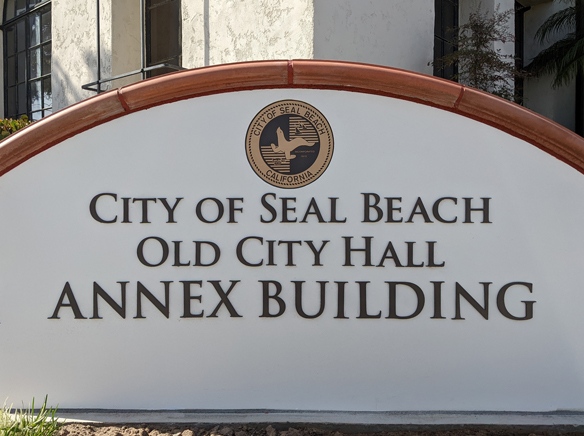The City Council this week formally scheduled a water and sewer rate hearing. The hearing will be held Feb. 12, 2024. The council also received and filed a rate study and authorized the city manager to notify the public of the proposed water and sewer rates. The vote was unanimous.
A notice will be sent to parcel owners.
The city will hold an “open house” on the water and sewer rates on Jan. 18, 2024.
The actual hearing will be held on Feb. 12.
The rates, if approved, would go into effect in April.
“If written protests submitted against the Water and Sewer Rate increases exceed more than 50% of the parcels subject to the proposed fee increases, a majority protest exists, and the City Council shall not impose the Water and Sewer Rate increase,” wrote Public Works Director Iris Lee in her staff report.
This was the next to last item on the agenda for the last council meeting of 2023. The meeting lasted about two-and-a-half hours.
“The City’s Water and Sewer utilities are funded entirely by fees received from the ratepayers, also known as Water Enterprise and Sewer Enterprise funds, respectively,” Lee wrote.
“All associated expenditures, such as operating and maintenance costs, capital improvements, and reserves are funded through rate-funded revenues, and not the General Fund,” Lee wrote.
“Rates are regularly evaluated as part of the City’s annual budgeting process to ensure projected revenues are sufficient to cover all Water and Sewer utility related expenditures. The City’s last rate adjustment was approved in February 2021; however, the rates are no longer sufficient to cover ongoing operating, maintenance, repair and improvement costs,” Lee wrote.
Seal Beach hired Raftelis Financial Consultants, Inc., to do a rate study.
According to Lee’s report, Raftelis found “Approximately $600,000 in lost revenue due to successful water conservation of 21% during the last major drought, along with the Winter 2023 atmospheric rivers that reduced outdoor irrigation use,” as well as increased costs for imported water and groundwater, aging infrastructure, inflation, and new legislation.
“To maintain effective operations, it is necessary to secure Water utility revenue through low-interest State Revolving Loans and market-debt loans. This approach ensures ongoing expenditures can be sustained until the anticipated rategenerated revenues come into effect,” Lee wrote.
“Current Water Rate structures will remain the same. That is, a fixed charge by meter size, plus a volumetric rate that is broken down into the following:
“• A two-tiered Single-Family Residential, Multi-Family Residential, and Leisure World customer class based on consumption; and,
“• A single-tiered rate structure for Commercial, Irrigation, Sunset Aquatic Park, and City customer class based on consumption,” Lee wrote.
“Following City Council approval of the Water and Sewer Rate Study, staff will prepare and mail notice to ratepayers that receive Water and/or Sewer services from the City. The City Clerk is responsible for tabulating the written protests received during the 45-day protest period. The City Clerk will report on the number of written protests received up to the time of the hearing. The Mayor will open the public hearing to receive additional written and oral protests,” Lee wrote.
“At the conclusion of the public hearing, the City Clerk will tabulate any additional written protests. The final tabulation may take a few minutes, depending on the number of written protests received by the close of the public hearing. The City Clerk will then report on the total number of written protests received,” Lee wrote.
As reported at the start of this article, if 50% of the parcels protest the rate increase, there will be no rate increase.
“If the final tabulation is less than 50% of all the parcels in the City, the City Council would consider implementing the Water and Sewer Rate increases effective April 1, 2024, and then on January 1 for each year from 2025 through 2028,” Lee wrote.












